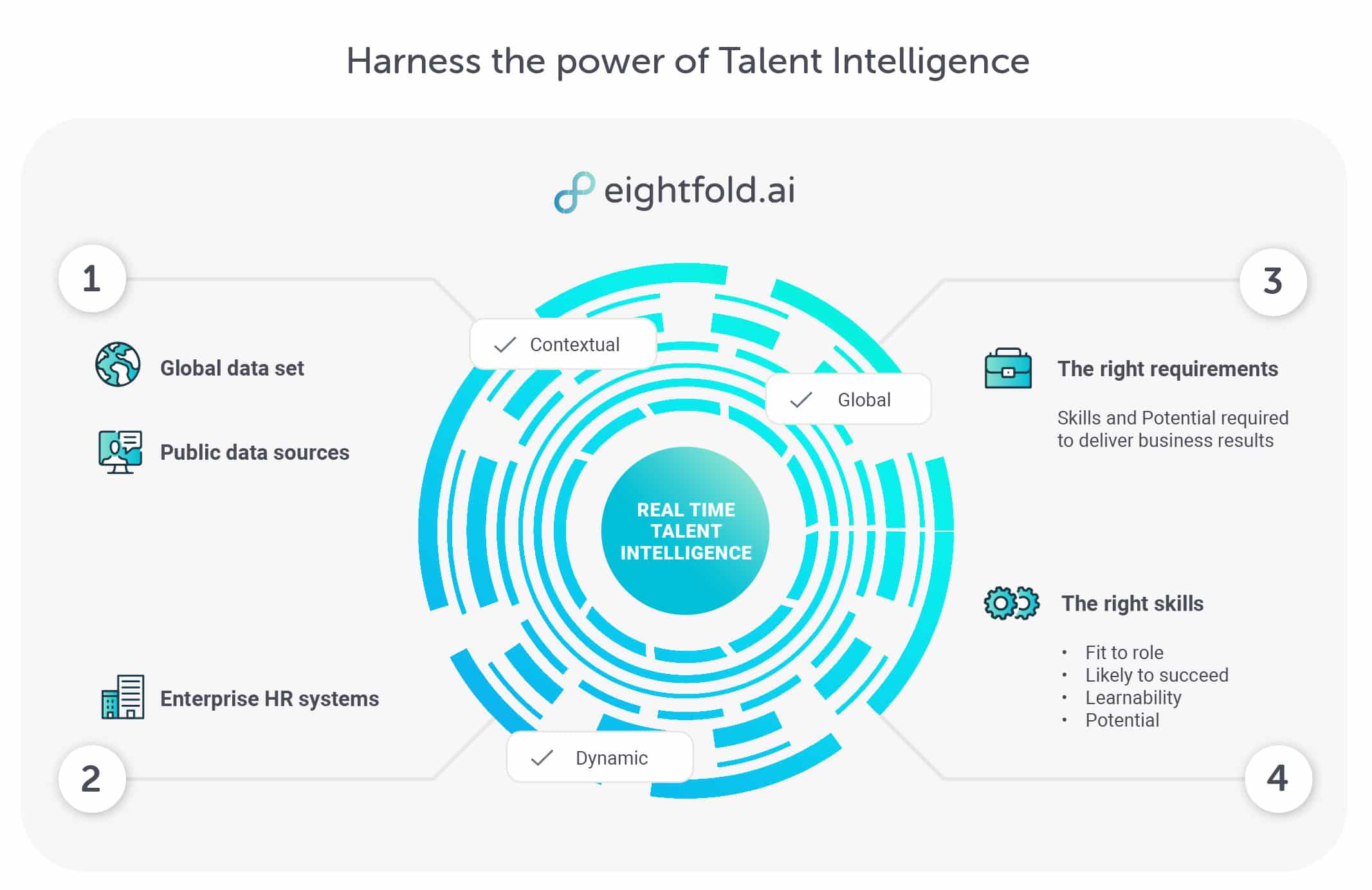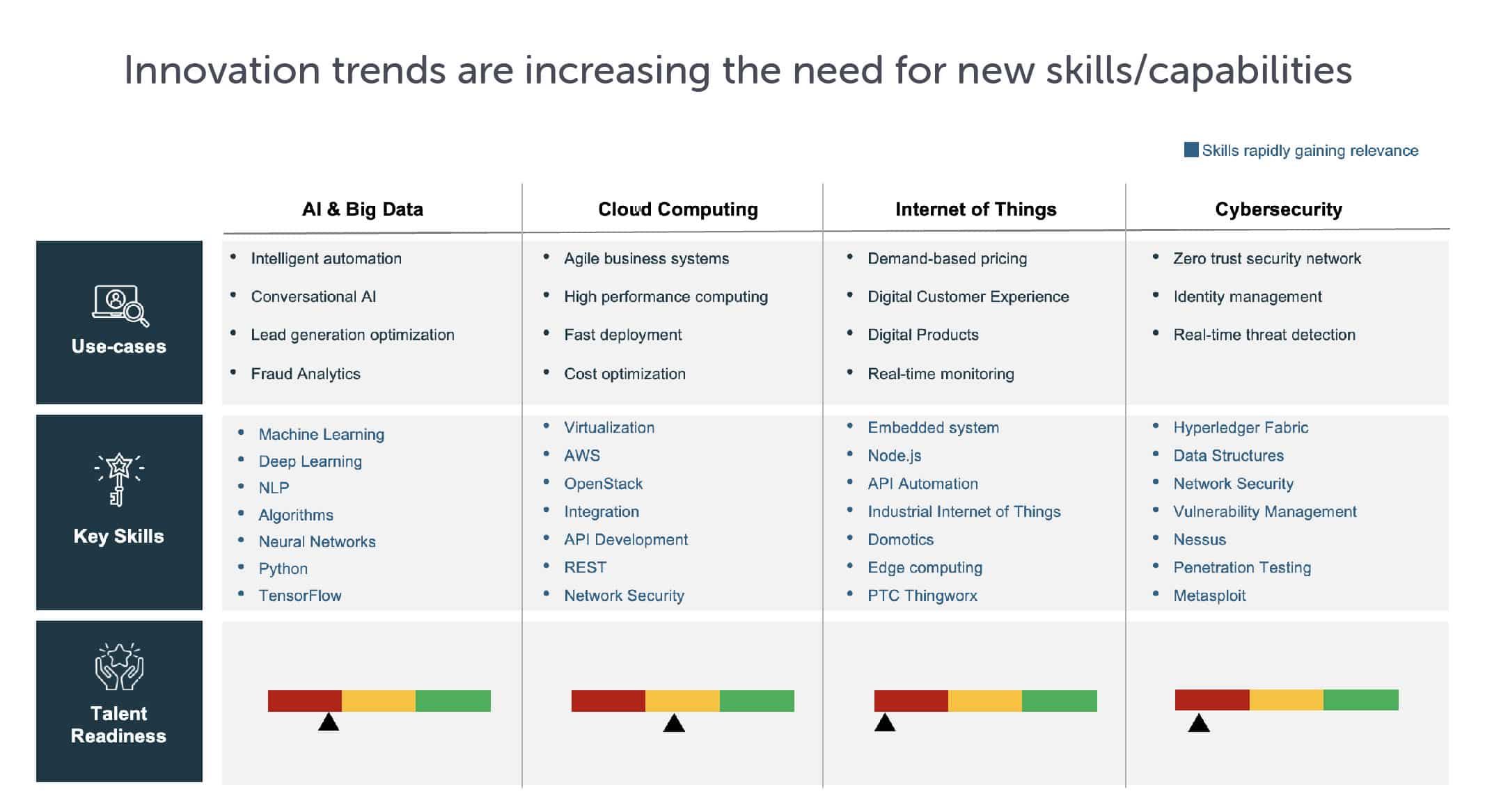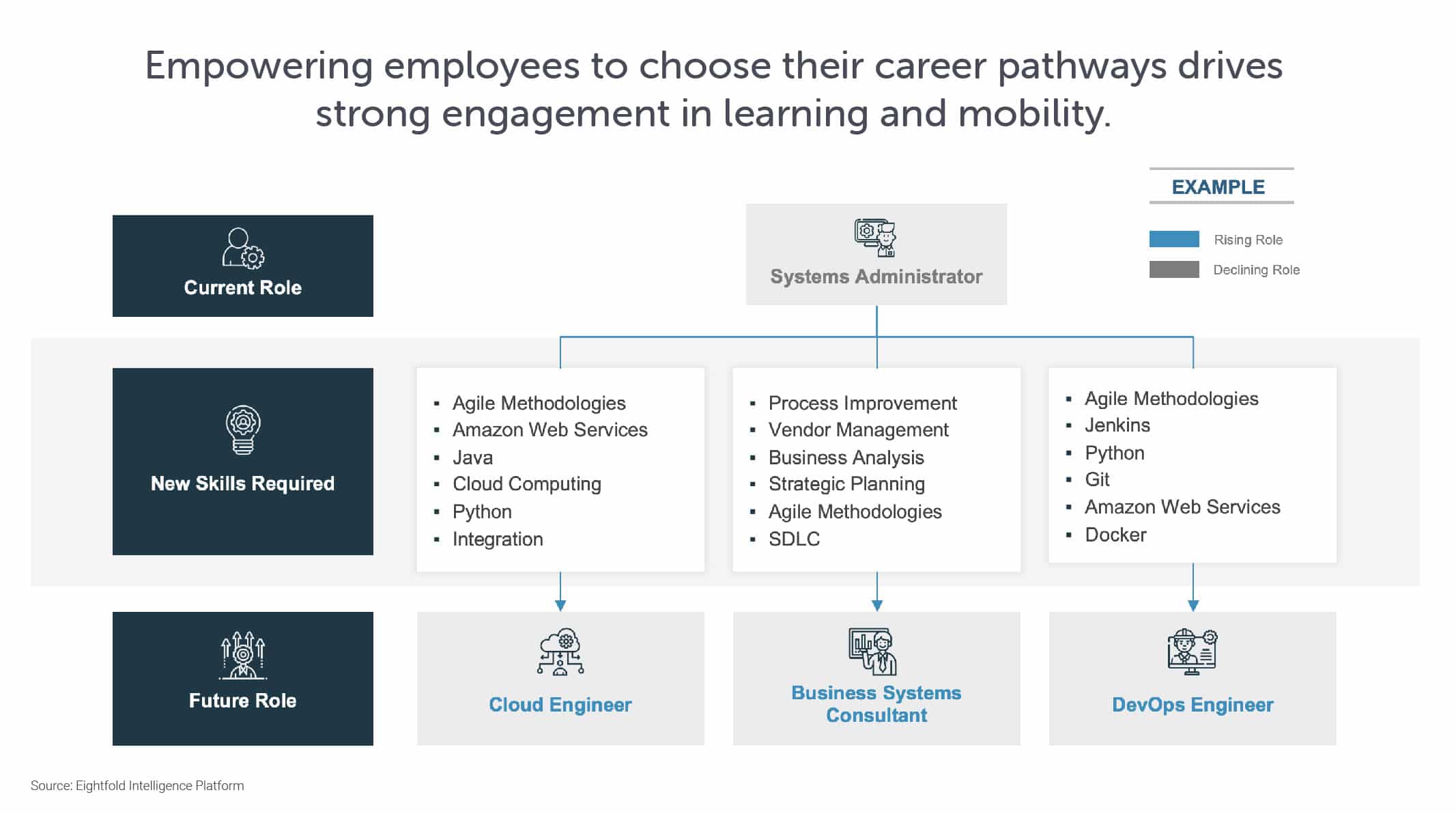When it comes to transforming the employee experience, the question is no longer “if” your organization does it — it’s become “how” you do it.
How do you deliver the kind of experience employees expect? How do you move to a skills-based talent management strategy? How do you create a high-performing workforce ready for the future? How do you even start?
I hear these questions from HR leaders every day. Their goal is to deliver a best-in-class experience for employees because they know that’s how they retain talent in this environment where organizations are fighting for the same skills. In these conversations, we talk a lot about how AI can grow critical skills and help organizations focus on talent priorities. And ultimately, the answer to doing it all comes down to having the right talent intelligence.
In this webinar with PwC, we explain how talent intelligence is necessary to deliver a transformative, skills-based employee experience for your workforce and organization. Here’s a summary of the key points.
Related content: It’s time to rethink your employee experience — here’s how to clear the path and reduce friction to provide an ideal employee experience.
Where does talent intelligence come from and how does it work?
We all know that skills are the new currency when it comes to talent management, but a skills-based approach is also needed to create a better employee experience. When you empower employees to understand their skills and future opportunities, you also drive engagement. This is where talent intelligence can make a big difference.
At Eightfold, there are three components in our Talent Intelligence Platform that give organizations a holistic picture of existing employee skills. The first is our large data set of publicly available sources, representing about half the world’s workforce. This includes data on jobs, skills required for those jobs, and how people acquire skills as they move through jobs.
Next, we take that data and integrate it with our customers’ enterprise HR systems to give them full visibility into their employees’ and candidates’ skills. This can include enhancing any existing data on employees and roles, and bringing to life all historical candidate information from an ATS platform, and more.
The third component is where the magic happens. When organizations know their employees’ skills, and leaders can match those skills required for every role, they unlock all talent priorities and improve the employee experience.

AI-powered talent intelligence has the power to harness global and publicly available data with your internal data to provide full visibility into the skills your organization has — and the ones it needs.
How does talent intelligence affect the employee experience?
Understanding employees’ current skills is just the first step. One of the main reasons employees leave organizations is a lack of internal mobility and career opportunities.
To increase mobility, employees must have transparency into roles across the company and understand which roles their skills best match to. If employees can find roles based on what they know versus who they know, all employees become empowered to shape their mobility. With talent intelligence, employees can see what role they match with based on their skills.
What about keeping up with emerging future skills? One of the age-old challenges of HR is engaging employees to keep their skills updated, yet the burden of identifying what skills are needed and acquiring those skills has traditionally fallen on employees alone with no benefit for completing their profiles. Using AI to match employees to jobs based on their skills gives them a great incentive to complete and maintain their profiles.
Today, every organization needs to connect the future skills it needs with opportunities for employees. As employees update their profiles with information, talent intelligence can identify their key skills, adjacent skills they have a high probability of learning successfully, and other career growth opportunities. Employees see a tangible path ahead and can see that their organization supports their upskilling and mobility needs.
One customer that recently launched Eightfold saw a 72% employee profile completion rate after only a month. When they combined talent intelligence with messaging about hearing employees’ requests for access to greater career mobility, it made a big difference in employee experience and engagement.

How Eightfold Talent Intelligence can help employees apply their updated profiles and skills to opportunities in your organization.
How does talent intelligence help you identify critical skills to compete?
The best way to understand how talent intelligence can improve your organization’s ability to upskill is through example. Let’s take a look at digital skills, a rising skill trend across all industries. If you’re searching for candidates with strong digital skills, it likely means other organizations are, too. With so much competition for the same talent, it makes more sense to look internally for those skills first.
Below are four categories of in-demand digital roles and the key skills needed to support each. With talent intelligence, you can see the rising skills across roles and even industries — and use that visibility to assess how ready you are to compete.
As you can see, digital skills play a critical role in business success based on the use cases. And most of the skills needed in these digital areas are in the red, meaning the readiness of most industries are is low as the prevalence of these skills remains low.

Top digital roles and in-demand skills for each — and how ready talent is to perform the essential skills to support each area.
How does talent intelligence keep pace with rapid change?
A big challenge in the war for talent is the rapid pace of change. Skills and roles that were in demand a few years ago aren’t as vital now, with the average half-life of a technical skill at about 2.5 years. This adds to the challenge of keeping employees happy with their career growth and up to date on the latest skill trends.
Let’s look at the role of a data scientist. Over the past decade, the demand for data scientists has grown dramatically, and, as you can see below, the top rising skills for data scientists in 2010 and 2020 vastly differ. If you look at the pace of change, you can see an average three- to five-year clip, very much aligning to the 2.5 years half-life mentioned before.
The ability to manage talent based on skills, building skills, and understanding what emerging skills will be needed puts your organization at an advantage when it comes to upskilling.

The role of a data scientist has changed drastically in 10 years, with a new set of rising skills. The half-life of a technical skill is now about 2.5 years.
The beauty of talent intelligence is that it puts employees in the driver’s seat. When HR, L&D, and employees work together using the same data sets on skills, they can create development plans and career growth opportunities that weren’t possible before — and build a robust talent ecosystem that provides a stronger employee experience.
In this below chart, employees can see possible career progressions and the skills required to get there for a systems administrator role. This puts the power of choice into their hands.

Talent intelligence shows the organization and employees a clear pathway to develop the new skills they’ll need to move forward in their careers.
Additionally, talent intelligence shows your organization and your employees their adjacent skills, closely related skills to in-demand ones you need. If you can identify employees who have these adjacent skills, they are more likely to be able to learn the new skills you need.

With talent intelligence, organizations can easily identify people with the potential to learn new skills by looking at their adjacent skills, thus expanding your talent pool exponentially.
Ready to deliver a skills-focused employee experience that supports your organization’s goals?
In today’s tough talent markets, with greater competition for in-demand skills and shrinking workforces, now is the time to implement a skills-based strategy in all your talent practices. This helps you find the best fits when you hire, and more importantly, it helps you hire from within — finding, championing, and promoting those existing employees ready for a new opportunity.
With the help of AI-powered talent intelligence giving you full visibility into the skills you need in your industry and what you have in-house, you have the power to match people’s skills to the work you need to get and stay ahead.
Andrea Shiah is the Head of Talent Strategy and Transformation at Eightfold AI, where she is an adviser to talent leaders helping them understand how AI and a skills-based approach to talent strategy enables their business priorities and prepares them for the change needed to remain competitive.
Watch the full webinar with Eightfold AI and PwC “From skills to success: Leveraging technology and innovation to transform the employee experience,” on demand now.



